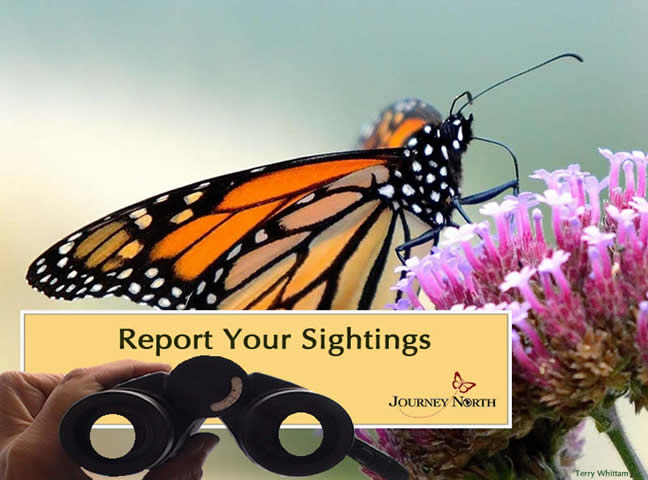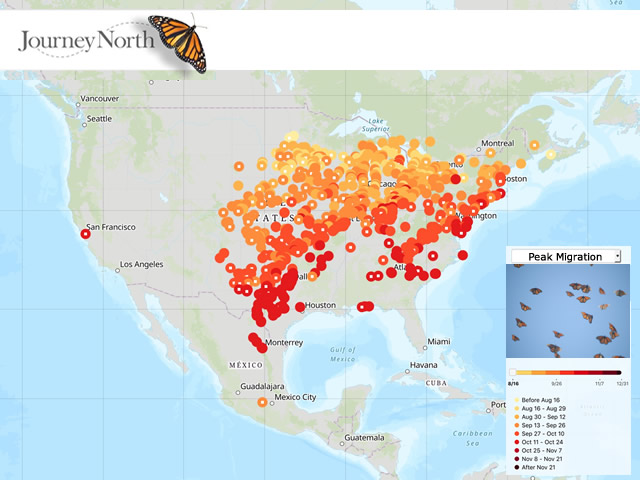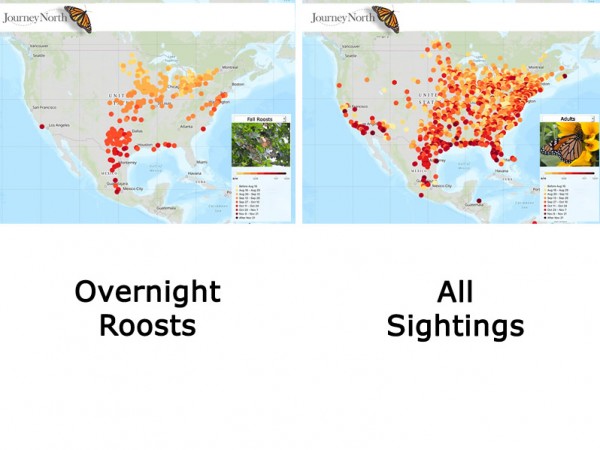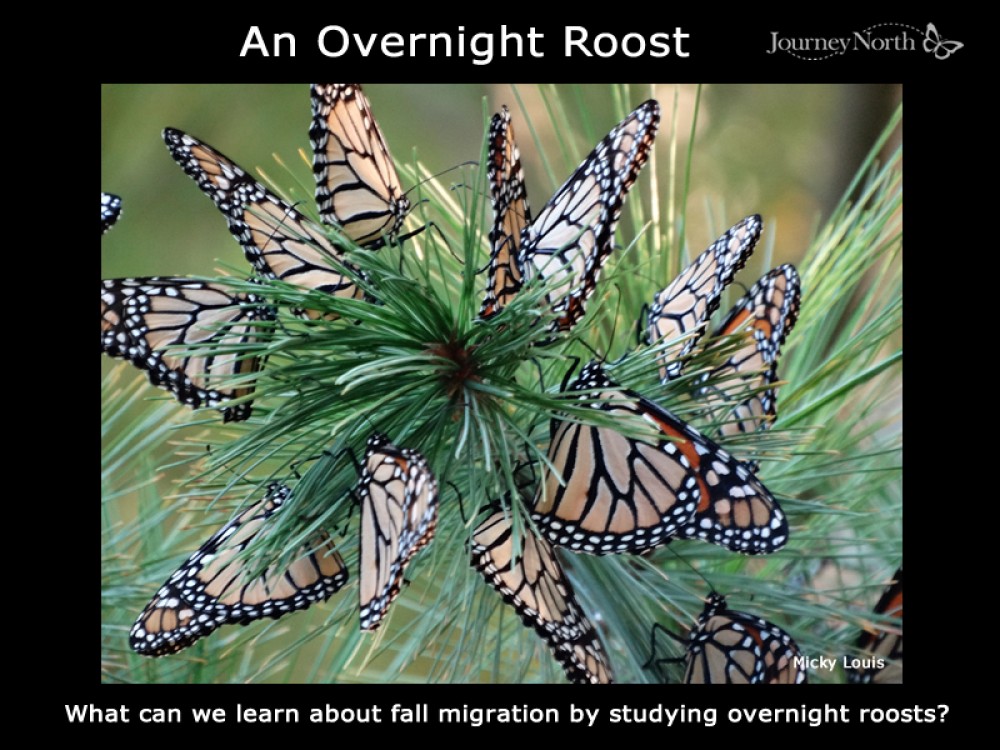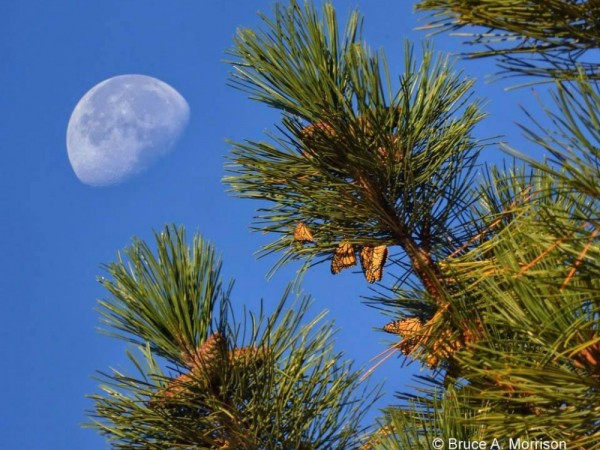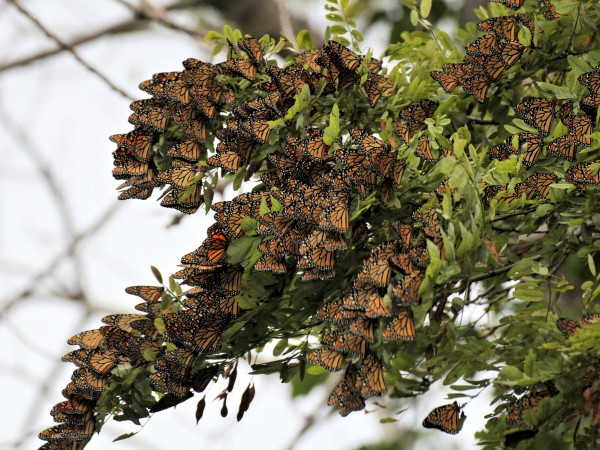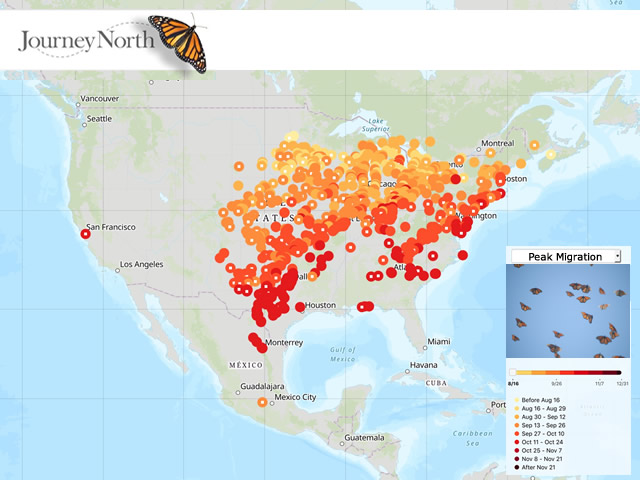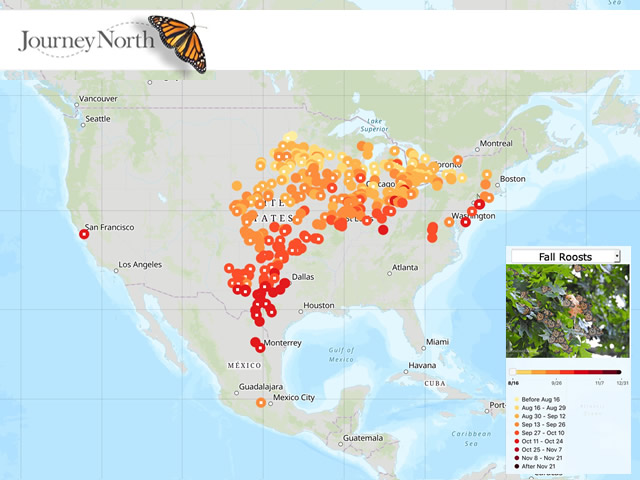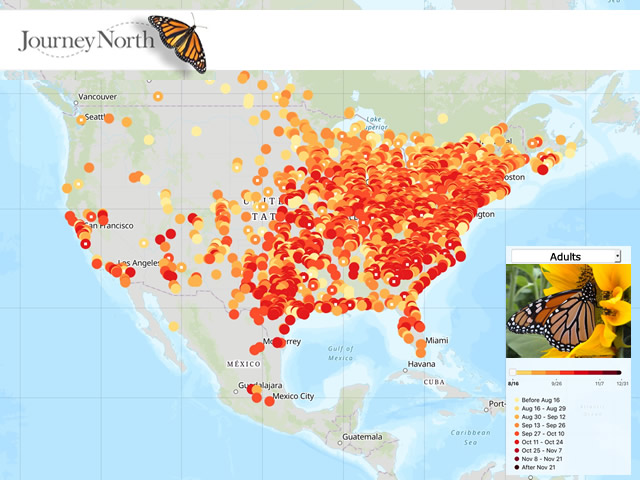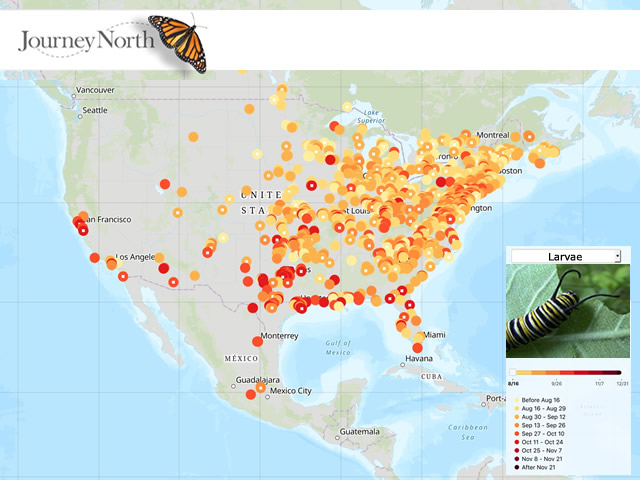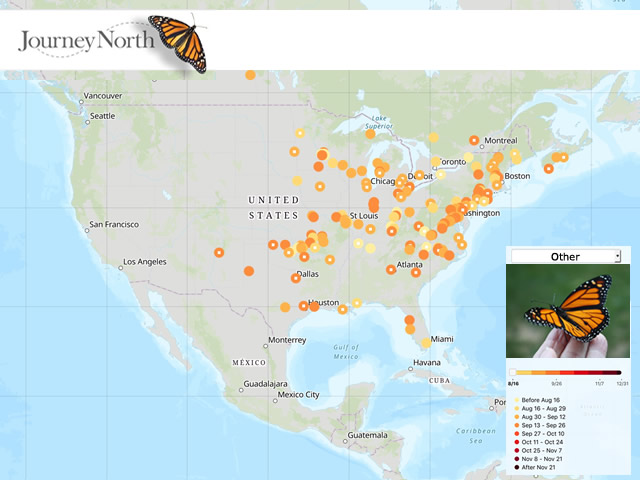Roosts Reveal Pathways
"Never seen such a flow!"
Monarch butterflies are abundant this fall and they're putting on quite a show. The eastern shore of Lake Huron was one of this week's hot spots.
“A major monarch butterfly migration occurred at Michigan's Harrisville State Park on August 22nd. I have never observed so many monarchs in one day in August.” More…
"Monarchs were staging by the tens of thousands on Tawas Point on August 23, 24 and 25th. With a strong south wind facing them, they wouldn't cross Tawas Bay. I went back on August 26th and they were gone by 10 am." Brenda McClure, East Tawas, Michigan
Roosts Reveal Pace and Pathways
Monarchs rest at overnight roosts at the end of each migration day. Look at the roost map and notice where roosting occurred in August. Roosts show us where large concentrations of migrating monarchs are found. Week by week, the map will reveal the main migration pathways to Mexico and the pace of the migration. The pace and pathways are impossible to discern from our "All Sightings" map as you can see when you compare maps.
Roosts Raise Questions
Much mystery surrounds this behavior. Roosts are difficult to study. They don’t last long and they can’t be found dependably in the same places every year. The late Dr. Lincoln Brower shared his wonder about the roosting phenomenon:
"If I discovered a roost, I'd pull up a chair, grab a pair of binoculars and just sit and watch! I'd try to stay hour after hour, day after day — as long as the monarchs were there. People can contribute important observations by going with an open mind and documenting what they see."
The overnight roost: What can we learn?
Fall Monarch Migration 2018
Please report all monarchs you see:
- Adults
- Eggs & Larvae
- Overnight Roosts
- Peak Migration Events


